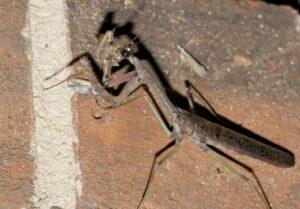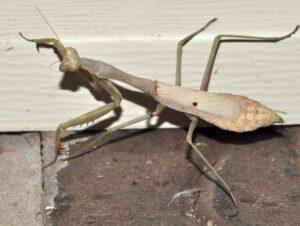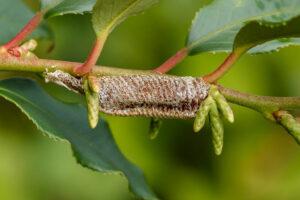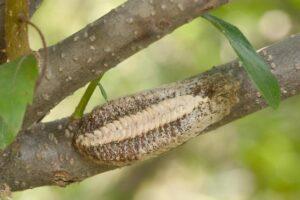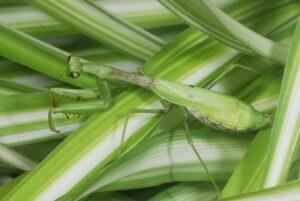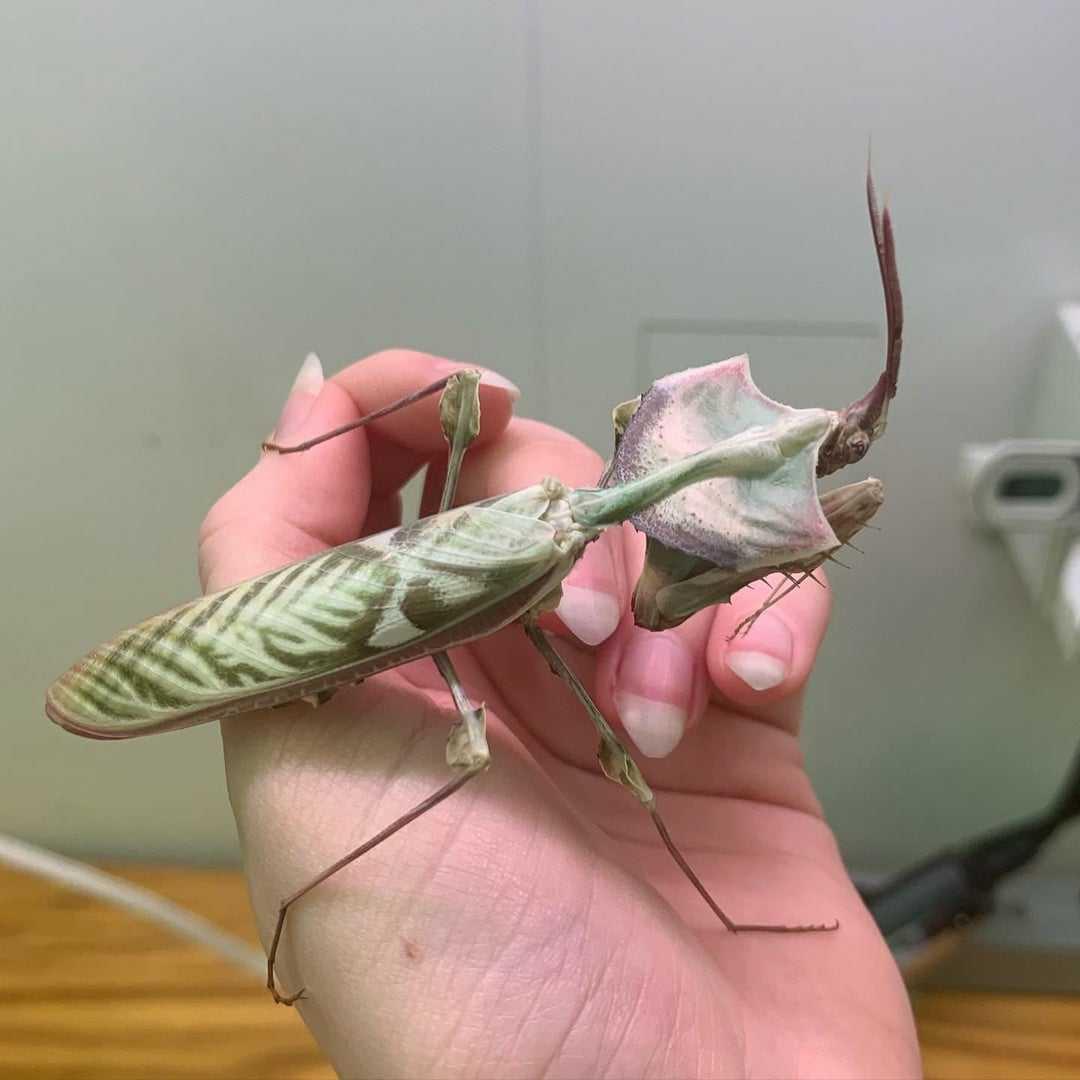Carolina Mantis (Stagmomantis carolina)
Updated on
17/11/2022The Carolina Mantis is the state insect of South Carolina. The mantis is a native of North Carolina and South Carolina, but its population range lies all over the U.S. Despite its tranquil ‘praying’ pose, this elusive creature is quite the predator of the insect world.
Scientific Classification
- Class:Insecta
- Order:Mantodea
- Family:Hymenopodidae
- Genus:Stagmomantis
- Species:S. carolina
Conservation Status
Description
The size of the adult males is about 2-2.2 inches, while the females are about 2-2.5 inches. Their body color ranges from a dusty brownish grey to a greenish tint. The male Carolina mantis has longer wings that cover roughly three-fourths of its abdomen. This characteristic makes the male lighter and more active. In contrast, the female is bigger and heftier with wings that barely cover two-thirds of its abdomen, thus making it non-active and unable to fly.
A dark-colored dot is present on the forewings of this species which might not be visible in a mantis with a darker morph.
Distribution: North America and South America. Most commonly found in the southeastern U.S.
Habitat: Found near flowering plants, low bushes, and shrubs
Lifespan: 10 months in the wild; up to a year or more in captivity
Predators: Birds and spiders
Behavior and Characteristics
Diet
The Carolina mantid feeds on true bugs, caterpillars, moths, wasps, butterflies, bees, and flies. It follows a very sedentary lifestyle and might stay in a meadow, shrub, or garden for its entire lifetime, provided a constant food supply. They are patient predators and stay near flowers in plant tops and shrubs to surprise and attack any prey near them. They use their strong forearms to capture their game and their sharp mouthparts to eat it.
The female S. carolina displays sexual cannibalism – that is, post sexual intercourse, the female ends up killing its mate.
Life Cycle
1. Egg Stage
The female mantis starts laying eggs during the months of September-October. They make egg sacs or cases called ootheca, which is a foam-like covering substance within which lies hundreds of eggs. This coating shields the eggs from the harsh winter until the eggs hatch.
Carolina praying mantis oothecae are small and flat and are commonly found on flat vertical surfaces.
Their egg cases are sold in garden supply centers to control pest insects in the garden so they can hatch and grow in vegetative areas and gardens, where they help get rid of pests by feeding on them.
2. Nymph Stage
The eggs hatch during spring, and the young, immature nymphs emerge. They generally stay around the ootheca and start their journey towards finding small insects. They also kill and eat their siblings for food. This phase is very vulnerable, where many nymphs die from starvation or cannibalism.
3. Adult Stage
The young nymphs undergo many molting stages to reach adulthood. They adjust their color over each molt, depending on their environment, until they go through their final molt to adulthood. These molts help them camouflage to their surroundings.
There is increased activity during the mating period, especially in males who fly in search of potential mates.
Care Sheet
The Carolina mantis is not a problematic pet to maintain. Their enclosure should be big enough to allow their free mobility. These species typically favor humid conditions, sol spraying water around the enclosure is essential. Misting the cage also enables the mantis to drink.
Due to their cannibalistic nature, each mantis should be kept apart from others.
Enclosure size: 7.5 inches tall x 7.5 inches long x 5 inches wide enclosure.
Temperature: A steady temperature of around 70 °F – 85 °F should be maintained
Humidity: They thrive in an ideal humidity of around 60-80%
Feeding: Different nymph stages(L1-L5) require food appropriate to their sizes.
- L1-L2: D. melanogaster fruit flies
- L3-L4: D. hydei fruit flies
- L5-Adult: House flies or blue-bottle flies.
Comparison with Similar Species
Vs. Chinese Mantis
Tenodera aridifolia, the Chinese Mantis, is larger than its cousin, the Carolina Mantis. The Chinese mantis has a square-shaped face plate, whereas the Carolina mantis has a rectangular face plate. An oblong-shaped ootheca is observed in the former, while the latter has a long egg case.
Compared to its cousin, the wings of the Chinese mantis cover its entire abdomen.
Vs. European Mantis
The European mantis (Mantis religiosa) has a black spot with a white dot in the middle, which is found on the inside of the grasping front legs. This pattern is not present in Carolina Mantis, which has a particular black spot with no white spots in the middle.
Source
preservationparks.com,townnews.com, entomology.ca.uky.edu, bugguide.net, staticflickr.com





